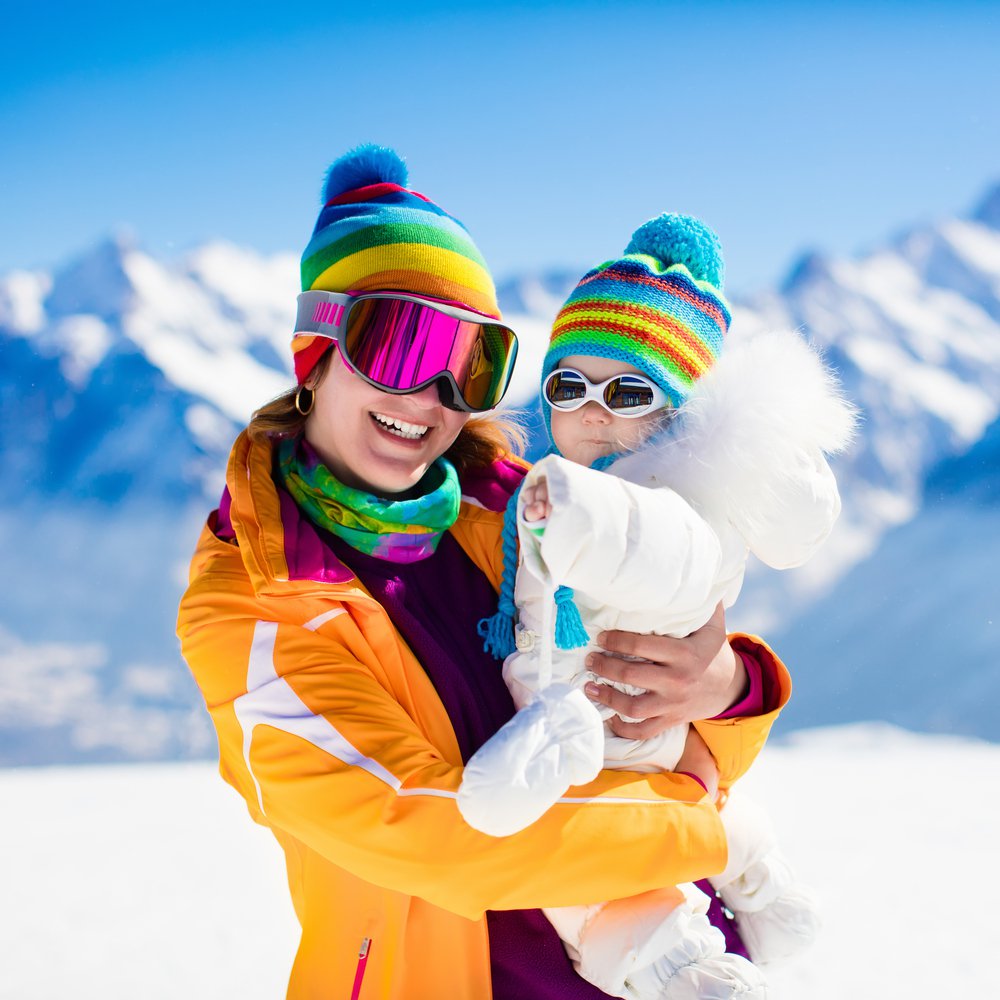
From blurred vision to tearing to dry eyes, wintertime can be rough on the eyes. In fact, the risk of ocular damage is the highest in the late winter, and this risk only increases with participation in winter sports. Follow these safety tips to prevent eye injury all winter long:
1. Wear Polarized, 100% UV-Protection Goggles
Goggles are a must for skiers and snowboarders to keep twigs, rocks, and other foreign objects from hitting them in their eyes. Opt for polarized lenses to absorb the glare from the snow around you, allowing you to see your surroundings more clearly.
UV protection is just as, if not more, crucial during winter activities because snow reflects up to 80 percent of the sun’s rays. Sand only reflects 15 percent. This means that the sun can actually do more damage to your eyes on a sunny winter day than on a day at the beach. Make sure your goggles have 100 percent UV protection to shield them from harmful UV rays. Add a dab of sunscreen around your eyes for added glare protection.
2. Use Lubricating Eye Drops
Cold air is sorely lacking in moisture. Combine cold, dry air with a wind factor and a long day on the slopes, and you can expect to have extremely dry eyes in a short period of time. Avoid dry eyes and irritation with lubricating eye drops. Keep it somewhere that is easy to reach and access so you can keep replenishing your eyes with drops throughout the day.
3. Pick The Right Color Lenses
If you’ll be skiing or snowboarding at night, you will want to wear a pair of clear lenses so you can have full visibility. As for winter sports that takes place during the day, colored lenses work best. Yellow lenses will improve the contrast in low light conditions, and brown, grey, and rose-colored lenses are ideal for cloudy, overcast conditions. There are even photochromic lenses (also known as “variable tint” or “light-adaptive lenses”) that can adjust their shade depending on UV light conditions.
4. Wear Eye Gear That’s Suitable For The Sport
A hockey player and an Alpine skier will need different types of sports goggles and headgear to stay safe in their sport. Protective eye gear standards are set by the American Society for Testing and Materials (ASTM), so be sure to look for ASTM ratings before you buy for your winter sports eye protection.
5. Wear Glasses Or One-Day Contacts
When you’re moving around on the windy slopes for hours on end, your eyes are at risk for dehydration. If possible and practical, wear sunglasses to help shield your eyes from the dry, blustery air. If you need to wear goggles and contact lenses are your only option, opt for one-day lenses that you can dispose of at the end of the day. They can provide more comfort in dry conditions than longer-wear contact lenses.
Stay Safe on the Slopes: Visit Us for Expert Eye Care!
It is essential to prioritize eye safety while participating in winter sports. The combination of cold, dry air and intense UV exposure can lead to various eye issues if proper precautions are not taken. By following these tips, such as wearing polarized goggles with 100% UV protection, using lubricating eye drops, choosing the right colored lenses, and wearing proper eye protection such as ASTM-rated protective eyewear, you can prevent eye injuries and enjoy your favorite winter sports to the fullest.
The expert ophthalmologists at Everett & Hurite are committed to providing high-quality eye care to patients of all ages. Our eye specialists are equipped with the latest technology to accurately diagnose a wide variety of eye conditions and can develop a customized treatment plan based on your individual needs. We have 10 offices conveniently located in Western Pennsylvania. Request an appointment with one of the physicians or call 412-288-0858.
Frequently Asked Questions
How can I protect my eyes from the winter sun?
To protect your eyes from the harsh effects of the winter sun, it is important to wear polarized goggles with 100% UV protection. Additionally, you can also apply sunscreen around your eyes and opt for colored lenses designed for low light or overcast conditions.
Can dry air during winter sports cause eye irritation?
Yes, dry air during winter sports can lead to eye irritation and even dry eyes if proper precautions are not taken. It is recommended to use lubricating eye drops and wear sunglasses or goggles to protect your eyes from the wind and cold air.
What are some common sports-related eye injuries that occur during winter activities?
Some common sports-related eye injuries that can occur during winter activities include scratches or cuts on the eye, corneal abrasions, and severe snow blindness.
How does UV exposure increase the risk of eye injuries during winter sports?
Snow reflects up to 80% of UV rays from the sun, making it more harmful to your eyes than sand, which only reflects 15%. This increased exposure to UV radiation can lead to a higher risk of eye damage.
